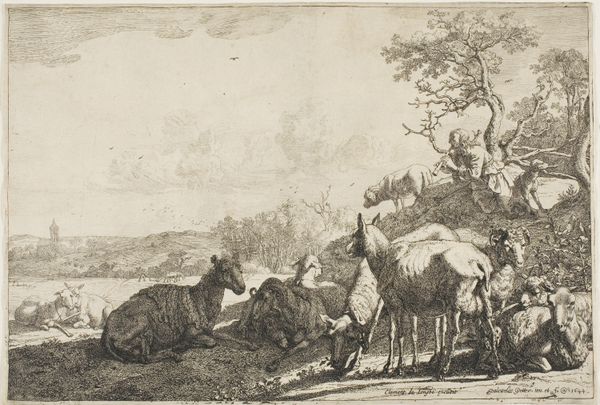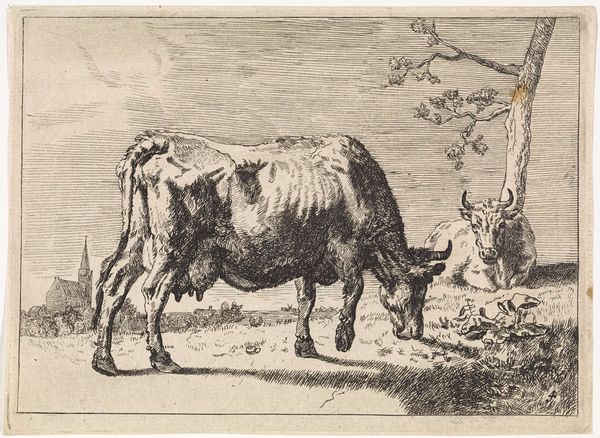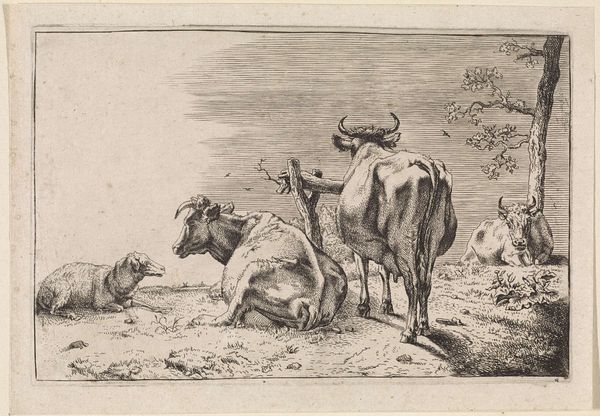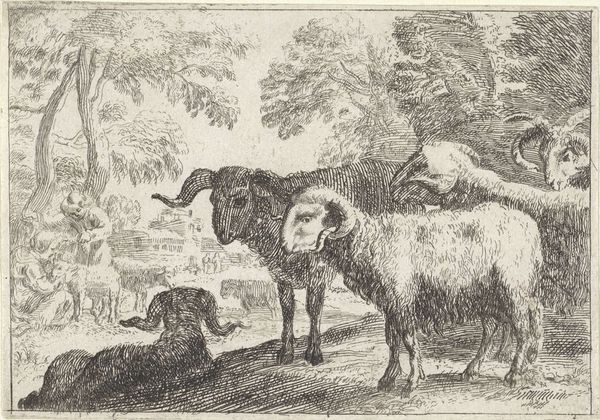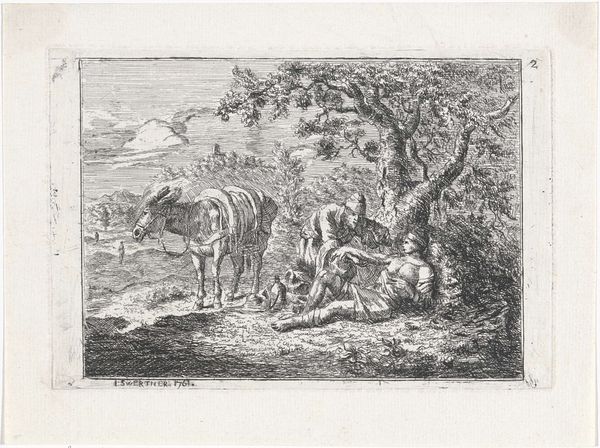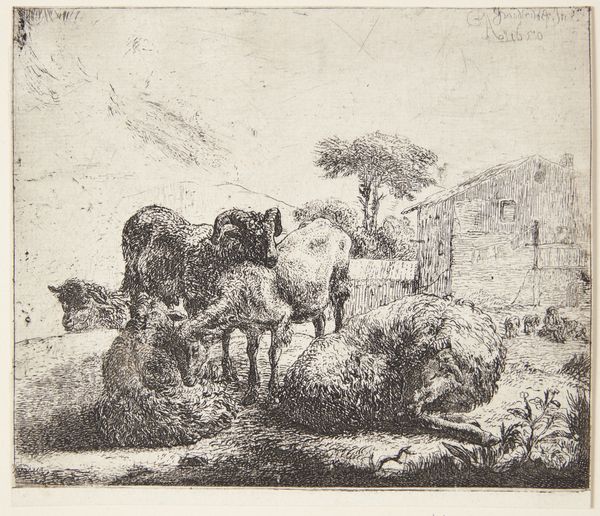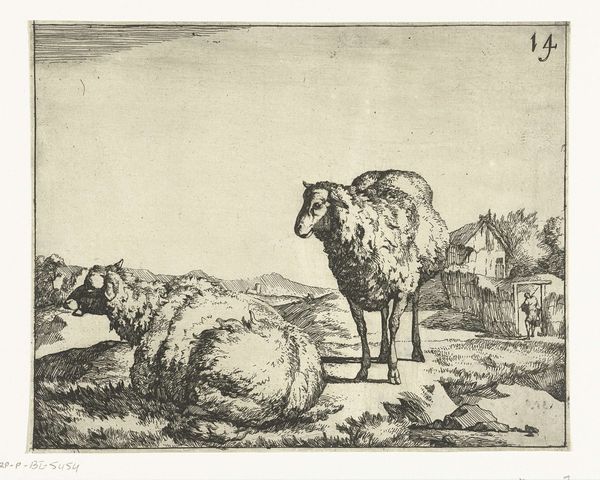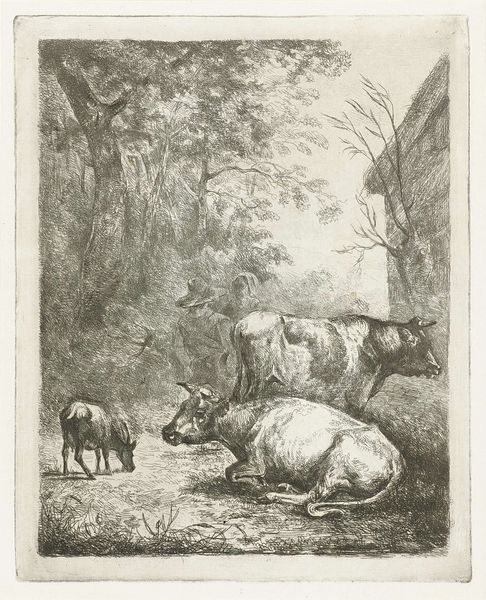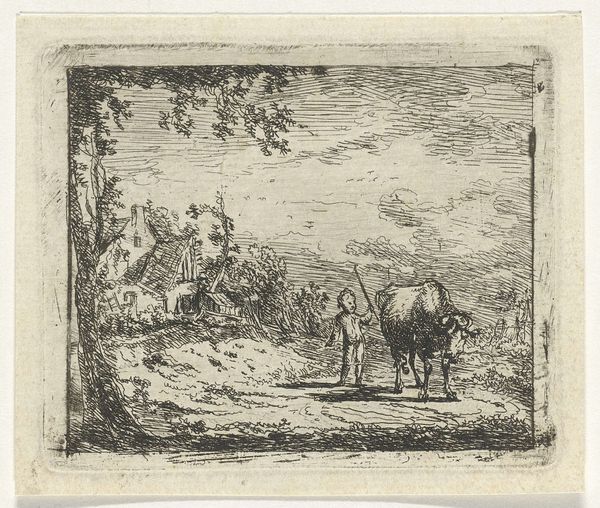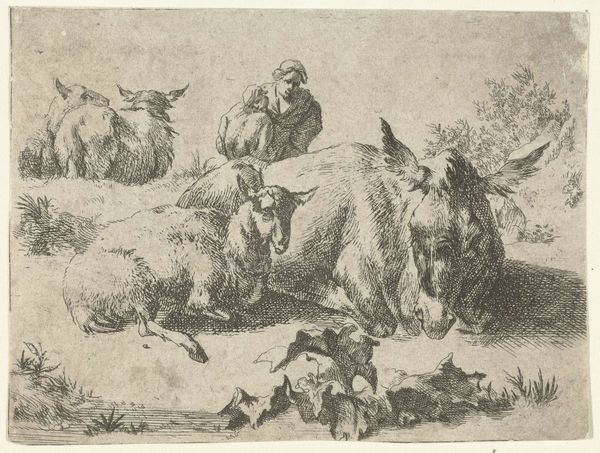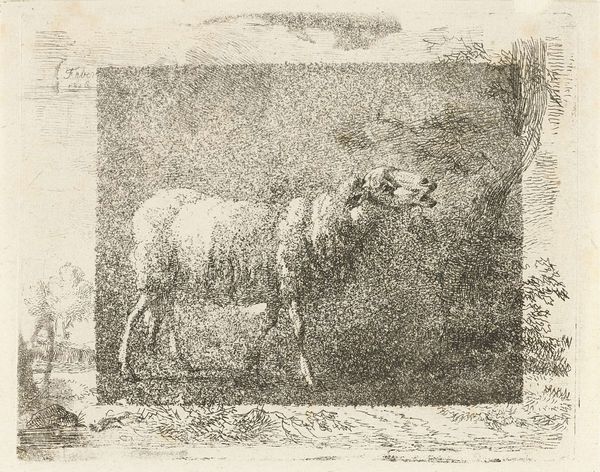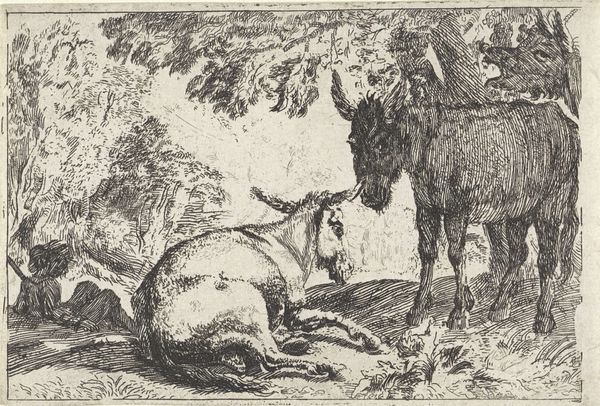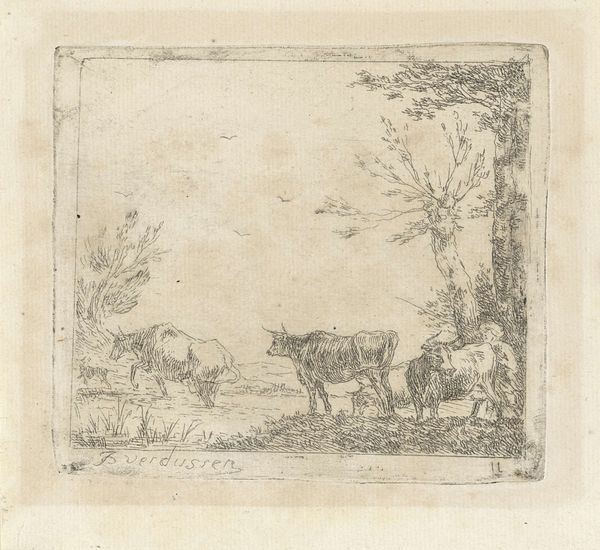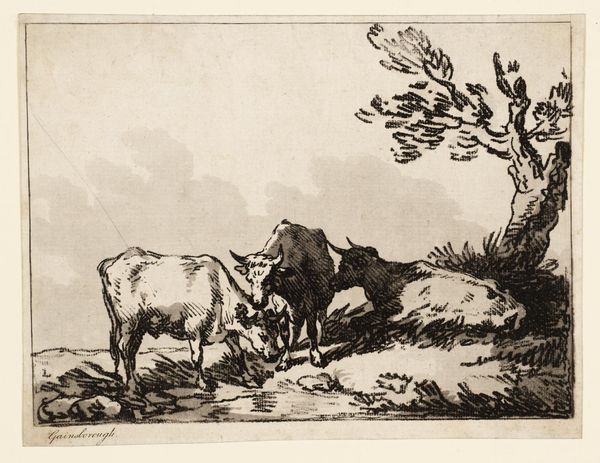
drawing, print, etching, paper
#
drawing
#
baroque
#
dutch-golden-age
# print
#
etching
#
landscape
#
paper
Dimensions: height 67 mm, width 132 mm
Copyright: Rijks Museum: Open Domain
This landscape, made by Nicolaes Anthoni Flinck, is an etching, a printmaking technique that relies on the corrosive power of acid. Flinck would have covered a metal plate with a waxy, protective layer, then scratched his design into it with a fine needle. The plate was then immersed in acid, which bit into the exposed lines. This process results in a quality of line quite distinct from drawing. The etched line has a nervous, almost vibrating quality. Look closely, and you'll see how Flinck exploits this effect, using it to capture the rough textures of the thatched roof and the surrounding foliage. Etching emerged as a popular medium in the 17th century, prized for its relative ease and capacity for detail. But it was never quite as highly regarded as painting. Works on paper were considered somehow less elevated, less permanent. This is unfortunate, as the process of etching is fascinating. It has its own distinct aesthetic, one that encourages us to appreciate the alchemical interplay of materials, labor, and time.
Comments
No comments
Be the first to comment and join the conversation on the ultimate creative platform.
